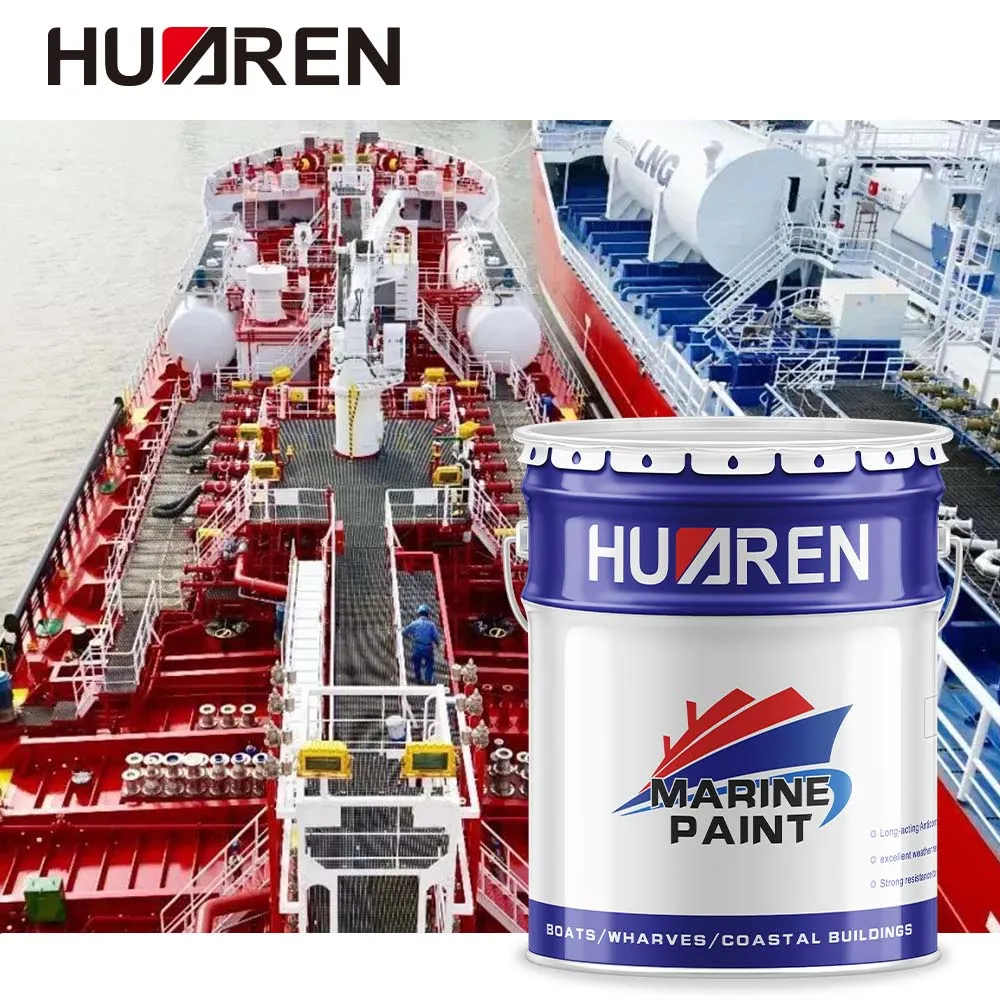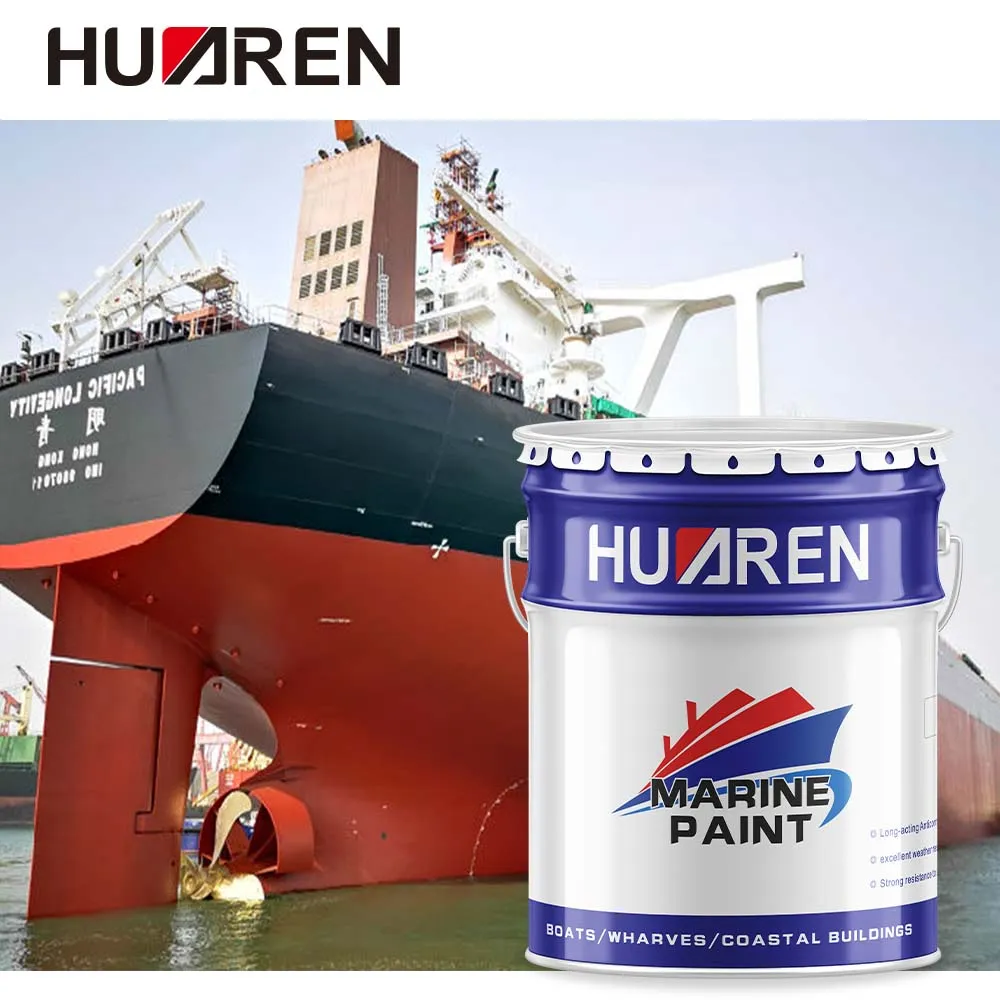In their respective fields of application, both marine paint and auto paint play a vital role. Although they are all coatings used to protect and beautify surfaces, there are significant differences in composition, performance and application methods as they are required to respond to different environments and challenges.
This article will explore in detail the main differences between marine paint and auto paint to help readers understand why these paints differ in design and use.

Differences in environment and challenges
1. The environment that marine paint faces:
Marine paint needs to deal with the marine environment, which is extremely corrosive and complex. Ships sailing through the water face the combined effects of salt water, marine life attachments (such as barnacles and algae), moisture, high temperatures and ultraviolet rays. Marine paint not only needs to prevent corrosion, but also provide anti-fouling and anti-slip properties to ensure long-term use and safety of the hull.
● Seawater corrosion:
The salts and minerals in seawater have a strong corrosive effect on hull materials, especially metal parts such as steel and aluminum hulls. In order to prevent seawater corrosion, marine paint must have extremely high corrosion resistance.
● Biological attachment:
Marine life such as barnacles and algae can cling to the bottom of a boat, increasing its resistance, slowing it down, and possibly causing physical damage to the hull. Antifouling paint prevents biological adhesion by releasing biocides or creating a smooth surface.
2. The environment that auto paint faces:
In contrast, auto paint mainly faces the terrestrial environment. Although auto paint also needs to deal with ultraviolet light, rain, pollutants and temperature changes, the intensity and complexity of these challenges are far less than those in the marine environment. The main function of auto paint is to provide anti-corrosion, anti-scratch and beautiful appearance.
★ UV rays and weather changes:
Auto paint needs to have good UV resistance to prevent color fading and paint aging caused by long-term exposure to sunlight. In addition, auto paint also needs to deal with rain and temperature changes to provide long-lasting protection.
★ Contaminants and Scratches:
In urban and highway environments, auto paint needs to deal with airborne pollutants, dust, bird droppings and minor scratches. Therefore, auto paint needs to have excellent stain resistance and scratch resistance.

Differences in Ingredients and Formulas
1. Ingredients of marine paint:
Marine paint is formulated to ensure it provides long-lasting protection in extreme environments. Common marine paint ingredients include epoxy resin, polyurethane and special antifouling additives.
● Epoxy resin:
Epoxy resin has excellent corrosion resistance and adhesion and is one of the main ingredients of marine paint. Epoxy paints are commonly used as primers and intermediate coats on boat hulls to provide strong base protection.
● Polyurethane:
Polyurethane paint has excellent wear resistance and UV resistance and is often used as a topcoat for boat hulls. Polyurethane paint creates a hard, smooth surface that reduces biological adhesion and provides an aesthetically pleasing appearance.
● Antifouling additives:
Antifouling paints often contain biocides such as copper or organotins, which slowly release these chemicals to prevent marine life from attaching. Environmentally friendly antifouling paints use non-metallic, bio-based additives.
2. Ingredients of auto paint:
The formula of auto paint is relatively simple. The main ingredients include acrylic, polyester and amino resin, as well as various pigments and additives.
★ Acrylic and polyester:
Acrylic and polyester resins have good weather resistance and chemical resistance and are the main ingredients of auto paint. They provide a glossy, hard finish that resists UV rays and minor scratches.
★ Pigments and additives:
Auto paint contains various pigments and additives to provide rich color choices and special effects (such as metallic glitter and pearlescent luster). Additives also include UV stabilizers and leveling agents to improve the appearance and durability of the paint finish.

Differences in application methods
1. Application of marine paint:
The application method of marine paint is relatively complex and usually involves multiple processes and professional equipment. The painting process usually takes place in a shipyard or dry dock to ensure quality construction.
● Surface treatment:
Before applying marine paint, the hull surface needs to be thoroughly cleaned and treated, including rust removal, sanding and washing. The quality of surface treatment directly affects the adhesion and durability of the paint film.
● Primer and intermediate paint:
Primers and intermediate coats of paint are typically epoxy paints to provide strong base protection. These layers of paint need to be applied evenly and ensure complete coverage of the hull surface.
● Topcoat and antifouling paint:
The topcoat is usually a polyurethane paint, which provides a smooth, beautiful appearance and an extra layer of protection. Antifouling paint is applied to the bottom of the boat to prevent marine life from adhering. The application of antifouling paint requires special attention to ensure even application and proper thickness.
2. Application of auto paint:
The painting process of auto paint is relatively simple and is usually carried out in a car manufacturer or a professional spray paint shop. Modern automotive painting processes are highly automated to ensure uniform and high-quality coatings.
★Surface treatment:
Before applying auto paint, the car body surface needs to be sanded, cleaned and primed. Primers provide good adhesion and corrosion protection.
★ Intermediate paint and topcoat:
The intermediate paint and topcoat layers usually use acrylic and polyester resin paints, which are sprayed and baked through multiple layers to form a bright and hard paint surface. Modern automotive painting processes often use robotic spraying to ensure even coverage of each layer of paint.

Differences in Performance and Durability
1. Performance of marine paint:
Marine paint needs to provide long-term protection in extreme environments, so its performance and durability requirements are extremely high.
● Corrosion resistance:
Marine paint is extremely corrosion-resistant and provides long-lasting protection in salt water and changing humidity environments. In particular, epoxy resin primer can effectively prevent seawater from corroding hull materials.
● Anti-fouling performance:
Antifouling paint prevents marine life from adhering by releasing biocides or creating a smooth surface. This not only reduces the impact of biofouling on the hull, but also maintains the ship's speed and fuel efficiency.
● Wear resistance:
Marine paint needs to have excellent wear resistance to resist physical damage and wear and tear to the hull during navigation. Especially in parts of the ship's bottom and sides that are susceptible to impact and friction, wear resistance is particularly important.
2. Performance of auto paint:
Auto paint mainly faces the land environment, so its performance requirements focus on weather resistance and scratch resistance.
★ Weather resistance:
Auto paint needs to have good weather resistance and be able to resist color fading and paint aging caused by long-term exposure to sunlight. The addition of anti-UV agents can effectively extend the service life of the paint surface.
★ Anti-scratch performance:
In urban and highway environments, auto paint needs to deal with airborne pollutants, dust, bird droppings and minor scratches. Therefore, auto paint needs to have excellent stain resistance and scratch resistance to maintain the beauty of the car body.
★Aesthetics:
The aesthetics of auto paint is an important factor that car owners pay attention to. Rich color options and special effects (such as metallic glitter and pearlescent luster) can meet the aesthetic needs of different car owners. In addition, the gloss and smoothness of the paint surface are also important indicators for measuring the quality of auto paint.
In conclusion
Although both marine paint and auto paint are paints used to protect and beautify surfaces, they have significant differences in composition, performance and application methods.
These differences mainly stem from the different environments and challenges they need to deal with. Marine paint needs to provide long-term protection in extreme marine environments, so its corrosion resistance, antifouling performance and wear resistance are extremely demanding. Auto paint, on the other hand, mainly faces the land environment, emphasizing weather resistance, scratch resistance and aesthetics.
By understanding these differences, consumers and professionals can better select and apply these coatings to ensure they work best in their respective fields.

